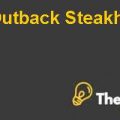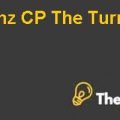
Nodal Logistics
- 1. What is REIT?
Real Estate Investment Trust (REITs) invests in and own properties, offering investors a highly liquid method of investing in high density markets like North America, Europe and Asia.
Most REITs earn their revenue from property rents and leases. In order to boost real estate investments, REIT receives special tax consideration for investing in highly liquid market i.e.: If more than 75% of their profits are generated through rents from real estate property and they distribute at least 90% of their current period profits as dividend to shareholders, then the trust will not be subject to corporate tax.
- 2. Why is Nodal Logistics interested in entering Brazilian Market?
Nodal previously enjoyed successful investments around the world. Their operations are spread over 15 countries, with a portfolio of around 140 million square feet and also serve around 3,000 customers worldwide.
Investing in Brazilian Market gives an additional opportunity to Nodal to enter into a new emerging market for the first time and to enjoy the same steady growth as Nodal enjoyed previously and to diversify its operations around the globe.
- 3. What special challenge does Nodal face entering the Brazilian market?
Foreign investments are always riskier; entering in new emerging market would enable Nodal to face two major risks, first is the foreign currency fluctuation risk and the other is operational risk. Nodal previously managed its foreign currency risk by dominating all industrial leases in US Dollars but this is not the case for such an investment in Brazil where Nodal is required under Brazilian Law to dominate all real estate contracts under Brazilian real.
Along with operational risk, Nodal will be continually subjected to face financial exposure risk of exchange rate fluctuations in future years also because rents earned over years in foreign currency like Brazilian Real had to be converted back to US Dollars each and every period to meet REIT requirements for profit distribution.
Nodal might face another challenge while remitting funds to United States because foreign companies investing in Brazil are required to register themselves with the Central Bank in order to apply for the right to remit funds to a Non-Brazilian Country in the form of dividends and shares.
- 4. What kind of currency risk does the Brazilian project pose to Nodal?
Nodal is concerned about the value generated over years from the Brazilian Project. The BRL is continually appreciating against US dollar over last 5 years but economic conditions are always uncertain and any adverse fluctuations in exchange rates can substantially threaten the projected cash flows.
Brazilian project might pose Nodal to face currency risk in two different ways. The first one is the initial execution of contract in BRL, although $45 Million is a huge investment and any adverse changes in exchange rate fluctuations can significantly impact the cash flows of the company and the second one is that the project is expected to generate regular cash flows in local currency that will be converted periodically in US Dollars for its distribution to shareholders, which can threaten cash flows in the long run.
Nodal shall consider adopting an appropriate hedging technique so as to avoid the negative effect of currency risk
- 5. What are the primary management methods to be considered?
The management can adopt different methods and strategies to evaluate this project. All of the different alternatives are critically evaluated on the basis of initial cost, Dollar return, NPV, etc
(a) Remain uncovered
(b) Purchase Forward Contracts
(c) Purchase Put options
(d) Cross-Currency Swap
(e) Currency Adjustment Clause
(f) Money Market Hedge
- What degree of risk does Nodal face if it chose to remain uncovered?
The real has been appreciating against US Dollars for more than 5 years (2002-2007), which is a good indication, especially for our series of cash flows which are expected to be generated over time. If the real enjoyed the same steady growth against US Dollars in future years also, it will enhance the operating profit and sufficient funds for Nodal to invest in other worthwhile projects.
On the other hand, the Brazilian economy has proved to be unstable over time and if the real falls in value against US Dollars, the majority of returns on the Brazilian investment would be substantially threatened.
- 7. What are the expected dollar proceeds for various hedging alternatives?
In order to determine the dollar proceeds from various hedging alternatives, a comprehensive calculation has been carried out, which is shown in Exhibit-1, Exhibit-2 and Exhibit-3.
Determination of the Benchmark
In order to evaluate different strategies, the first question comes in our mind is which of the various sensitivities or cases should be considered as our benchmark? The exchange rate is not fixed and is subject to continuous fluctuations so we can use forward exchange rates as our benchmark because it eliminates the currency risk and allow the company to predict dollar proceeds. On the other hand we can also use the current exchange rate as our benchmark because fixed rate sensitivity is the most edible approach for management. In this scenario, we assume fixed exchange rate as our benchmark.
(a.) Remain Uncovered
If the project is not material to the company and it wishes to bear self-insure against adverse changes in exchange rate then remaining uncovered is a distinct possibility. This can be further justified through a recent trend of appreciation of BRL against the US Dollar.
If we assume that the BRL remains fixed at BRL 1.795/$. The analysis in Exibit-1 shows that the cumulative cash flows over the first six years will result a total of $15,126,195, and a present value of $10,279,691. Moreover, if the BRL appreciates against US Dollar in future, then the Nodal would be enjoying far better position than this but on the other hand if the BRL depreciates against US Dollar, the scenario would be worst and the long term projected cash flows will be substantially threatened.
Although exchange rates continually fluctuate over time and there is a clear possibility that exchange rates will appreciate or depreciate over time so a calculation has been carried out in Exibit-1, showing the possibility of appreciation or depreciation of exchange rate at 5% annually.
If we assume that the BRL is expected to appreciate against US Dollar at 5%then, the analysis in Exibit-1 shows that the cumulative cash flows over the first six years will result a total of $18,554,307 and a present value of $12,500,647 with an increased growth of (+21.6%) over benchmark. On the other hand, if the BRL is expected to depreciate against dollar at 5%then, the cumulative cash flows over the first six years will show a total of $12,261,289 and a present value of $8,409,066 with a reduced decline of (-18.2%) over its benchmark.........
This is just a sample partial case solution. Please place the order on the website to order your own originally done case solution.
The solution will also come with a separate excel file with calculations.











